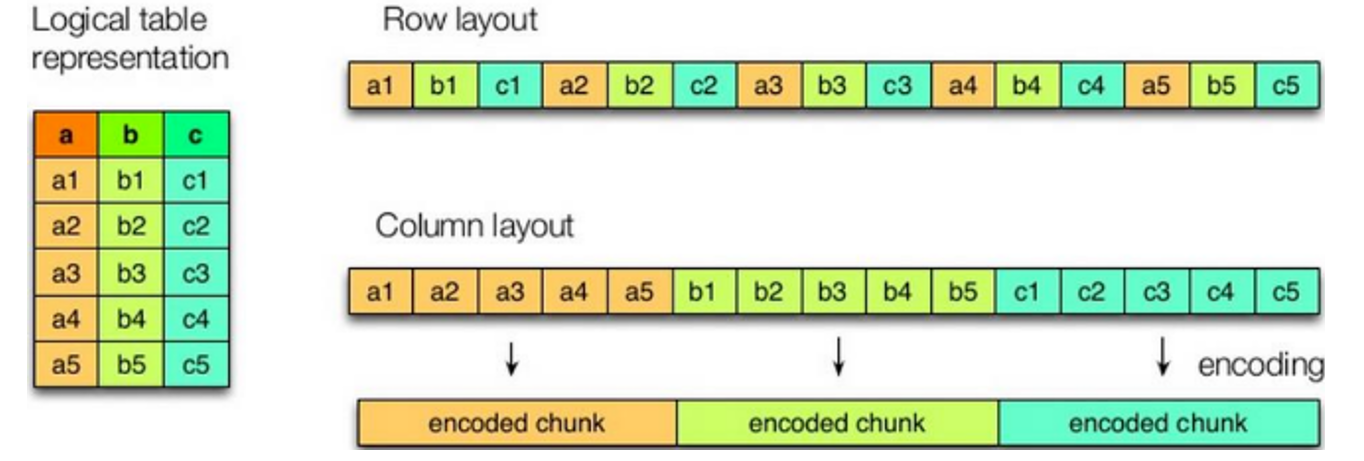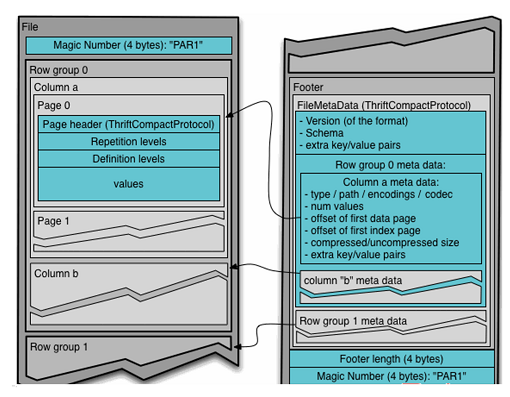一、函数
1.1 系统内置函数
查看系统自带的函数:hive> show functions;
显示自带的函数的用法:hive> desc function upper;
详细显示自带的函数的用法:hive> desc function extended upper;
1.2 自定义函数
当Hive提供的内置函数无法满足你的业务处理需要时,此时就可以考虑使用用户自定义函数(UDF:user-defined function)
①UDF(User-Defined-Function)
一进一出
②UDAF(User-Defined Aggregation Function)
聚集函数,多进一出,如count、max、min
③UDTF(User-Defined Table-Generating Functions)
一进多出,如lateral view explore()
编程步骤:
- 引入依赖
<dependency>
<groupId>org.apache.hive</groupId>
<artifactId>hive-exec</artifactId>
<version>1.2.1</version>
</dependency>
- 继承
org.apache.hadoop.hive.ql.exec.UDF。需要实现evaluate函数,evaluate函数支持重载。
public class Upper extends UDF {
public String evaluate(String original) {
if (original == null) {
return null;
}
return original.toUpperCase();
}
}
- 打包命名为
h.jar后上传至/opt/module/hive-1.2.1/lib文件下 - 在hive的命令行窗口创建函数
添加Jar:add jar /opt/module/hive-1.2.1/lib/h.jar
创建function:create temporary function myupper as "com.hucheng.hive.Upper" - 删除命令:
Drop temporary function if exists myupper;
二、压缩和存储
Hadoop数据压缩见https://hucheng.blog.csdn.net/article/details/106520311
2.1 开启Map输出阶段压缩
开启Map输出阶段压缩可以减少Job中Map和ReduceTask间数据传输量,具体配置如下:
- 开启
Hive中间传输数据压缩功能
hive (default)>set hive.exec.compress.intermediate=true; - 开启
MapReduce中Map输出压缩功能
hive (default)>set mapreduce.map.output.compress=true; - 设置
MapReduce中Map输出数据的压缩方式
hive (default)>set mapreduce.map.output.compress.codec= org.apache.hadoop.io.compress.SnappyCodec; - 执行查询语句
hive (default)> select count(ename) name from emp;
2.2 开启Reduce输出阶段压缩
当Hive将输出写入到表中时,输出内容同样可以进行压缩。属性hive.exec.compress.output控制着这个功能。用户可能需要保持默认设置文件中的默认值false,这样默认的输出就是非压缩的纯文本文件了。用户可以通过在查询语句或执行脚本中设置这个值为true,来开启输出结果压缩功能。
- 开启
Hive最终输出数据压缩功能
hive (default)>set hive.exec.compress.output=true; - 开启
MapReduce最终输出数据压缩
hive (default)>set mapreduce.output.fileoutputformat.compress=true; - 设置
MapReduce最终数据输出压缩方式
hive (default)> set mapreduce.output.fileoutputformat.compress.codec = org.apache.hadoop.io.compress.SnappyCodec; - 设置
MapReduce最终数据输出压缩为块压缩
hive (default)> set mapreduce.output.fileoutputformat.compress.type=BLOCK; - 测试一下输出结果是否是压缩文件
hive (default)> insert overwrite local directory '/opt/module/datas/distribute-result' select * from emp distribute by deptno sort by empno desc;
2.3 Hive文件存储格式
Hive支持的存储数据的格式主要有:TEXTFILE 、SEQUENCEFILE、ORC、PARQUET
①列式存储和行式存储

行存储的特点:查询满足条件的一整行数据的时候,列存储则需要去每个聚集的字段找到对应的每个列的值,行存储只需要找到其中一个值,其余的值都在相邻地方,所以此时行存储查询的速度更快。
列存储的特点:因为每个字段的数据聚集存储,在查询只需要少数几个字段的时候,能大大减少读取的数据量;每个字段的数据类型一定是相同的,列式存储可以针对性的设计更好的设计压缩算法。
TEXTFILE和SEQUENCEFILE的存储格式都是基于行存储的;ORC和PARQUET是基于列式存储的。
②TextFile格式
默认格式,数据不做压缩,磁盘开销大,数据解析开销大。可结合Gzip、Bzip2使用,但使用Gzip这种方式,Hive不会对数据进行切分,从而无法对数据进行并行操作。
③Orc格式
Orc (Optimized Row Columnar)是Hive 0.11版里引入的新的存储格式。
如图所示可以看到每个Orc文件由1个或多个Stripe组成,每个Stripe一般为HDFS的块大小,每一个Stripe包含多条记录,这些记录按照列进行独立存储,对应到Parquet中的Row Group的概念。每个Stripe里有三部分组成,分别是Index Data,Row Data,Stripe Footer:

- Index Data:一个轻量级的
Index,默认是每隔1W行做一个索引。这里做的索引应该只是记录某行的各字段在Row Data中的Offset。 - Row Data:存的是具体的数据,先取部分行,然后对这些行按列进行存储。对每个列进行了编码,分成多个
Stream来存储。 - Stripe Footer:存的是各个
Stream的类型,长度等信息。
每个文件有一个File Footer,这里面存的是每个Stripe的行数,每个Column的数据类型信息等;每个文件的尾部是一个PostScript,这里面记录了整个文件的压缩类型以及FileFooter的长度信息等。在读取文件时,会seek到文件尾部读PostScript,从里面解析到File Footer长度,再读FileFooter,从里面解析到各个Stripe信息,再读各个Stripe,即从后往前读。
④Parquet格式
Parquet文件是以二进制方式存储的,所以是不可以直接读取的,文件中包括该文件的数据和元数据,因此Parquet格式文件是自解析的。
- 行组(
Row Group):每一个行组包含一定的行数,在一个HDFS文件中至少存储一个行组,类似于orc的stripe的概念。 - 列块(
Column Chunk):在一个行组中每一列保存在一个列块中,行组中的所有列连续的存储在这个行组文件中。一个列块中的值都是相同类型的,不同的列块可能使用不同的算法进行压缩。 - 页(
Page):每一个列块划分为多个页,一个页是最小的编码的单位,在同一个列块的不同页可能使用不同的编码方式。
通常情况下,在存储Parquet数据的时候会按照Block大小设置行组的大小,由于一般情况下每一个Mapper任务处理数据的最小单位是一个Block,这样可以把每一个行组由一个Mapper任务处理,增大任务执行并行度。Parquet文件的格式如图所示:

上图展示了一个Parquet文件的内容,一个文件中可以存储多个行组,文件的首位都是该文件的Magic Code,用于校验它是否是一个Parquet文件,Footer length记录了文件元数据的大小,通过该值和文件长度可以计算出元数据的偏移量,文件的元数据中包括每一个行组的元数据信息和该文件存储数据的Schema信息。除了文件中每一个行组的元数据,每一页的开始都会存储该页的元数据,在Parquet中,有三种类型的页:数据页、字典页和索引页。数据页用于存储当前行组中该列的值,字典页存储该列值的编码字典,每一个列块中最多包含一个字典页,索引页用来存储当前行组下该列的索引,目前Parquet中还不支持索引页。
2.4 主流文件存储格式对比实验
①存储文件的压缩比测试:
TextFile:
hive (default)> create table log_text (
track_time string,
url string,
session_id string,
referer string,
ip string,
end_user_id string,
city_id string
)
row format delimited fields terminated by ' '
stored as textfile ;
hive (default)> load data local inpath '/root/datas/log.data' into table log_text ;
hive (default)> dfs -du -h /user/hive/warehouse/log_text;
18.1 M /user/hive/warehouse/log_text/log.data
ORC:
create table log_orc(
track_time string,
url string,
session_id string,
referer string,
ip string,
end_user_id string,
city_id string
)
row format delimited fields terminated by ' '
stored as orc ;
hive (default)> insert into table log_orc select * from log_text ;
hive (default)> dfs -du -h /user/hive/warehouse/log_orc/ ;
2.8 M /user/hive/warehouse/log_orc/000000_0
Parquet:
hive (default)> create table log_parquet(
track_time string,
url string,
session_id string,
referer string,
ip string,
end_user_id string,
city_id string
)
row format delimited fields terminated by ' '
stored as parquet ;
hive (default)> insert into table log_parquet select * from log_text ;
hive (default)> dfs -du -h /user/hive/warehouse/log_parquet/ ;
13.1 M /user/hive/warehouse/log_parquet/000000_0
存储文件的压缩比总结:ORC > Parquet > textFile
②存储文件的查询速度测试:
TextFile:
hive (default)> select count(*) from log_text;
_c0
100000
Time taken: 21.54 seconds, Fetched: 1 row(s)
Time taken: 21.08 seconds, Fetched: 1 row(s)
Time taken: 19.298 seconds, Fetched: 1 row(s)
ORC:
hive (default)> select count(*) from log_orc;
_c0
100000
Time taken: 20.867 seconds, Fetched: 1 row(s)
Time taken: 22.667 seconds, Fetched: 1 row(s)
Time taken: 18.36 seconds, Fetched: 1 row(s)
Parquet:
hive (default)> select count(*) from log_parquet;
_c0
100000
Time taken: 22.922 seconds, Fetched: 1 row(s)
Time taken: 21.074 seconds, Fetched: 1 row(s)
Time taken: 18.384 seconds, Fetched: 1 row(s)
存储文件的查询速度总结:查询速度相近
2.5 存储和压缩结合
修改Hadoop集群具有Snappy压缩方式
①将编译好的支持Snappy压缩的Hadoop-2.7.2.tar.gz包导入到Hadoop100的/opt/software中
②解压Hadoop-2.7.2.tar.gz到当前路径:tar -zxvf hadoop-2.7.2.tar.gz
③将hadoop-2.7.2/lib/native路径下的Snappy压缩的动态链接拷贝到开发集群中
cp ../native/* /opt/module/hadoop-2.7.2/lib/native/
④分发集群:xsync native
⑤查看hadoop支持的压缩类型(此时已经支持snappy):
[root@hadoop100 hadoop-2.7.2]$ hadoop checknative
17/12/24 20:45:02 WARN bzip2.Bzip2Factory: Failed to load/initialize native-bzip2 library system-native, will use pure-Java version
17/12/24 20:45:02 INFO zlib.ZlibFactory: Successfully loaded & initialized native-zlib library
Native library checking:
hadoop: true /opt/module/hadoop-2.7.2/lib/native/libhadoop.so
zlib: true /lib64/libz.so.1
snappy: true /opt/module/hadoop-2.7.2/lib/native/libsnappy.so.1
lz4: true revision:99
bzip2: false
测试存储和压缩:
ORC存储方式的压缩:
| Key | Default | Notes |
|---|---|---|
| orc.compress | ZLIB | high level compression (one of NONE, ZLIB, SNAPPY) |
| orc.compress.size | 262,144 | number of bytes in each compression chunk |
| orc.stripe.size | 268,435,456 | number of bytes in each stripe |
| orc.row.index.stride | 10,000 | number of rows between index entries (must be >= 1000) |
| orc.create.index | true | whether to create row indexes |
| orc.bloom.filter.columns | "" | comma separated list of column names for which bloom filter should be created |
| orc.bloom.filter.fpp | 0.05 | false positive probability for bloom filter (must >0.0 and <1.0) |
注意:所有关于ORCFile的参数都是在HQL语句的TBLPROPERTIES字段里面出现 |
①创建一个非压缩的的ORC存储方式
hive (default)> create table log_orc_none(
track_time string,
url string,
session_id string,
referer string,
ip string,
end_user_id string,
city_id string
)
row format delimited fields terminated by ' '
stored as orc tblproperties ("orc.compress"="NONE");
hive (default)> insert into table log_orc_none select * from log_text ;
hive (default)> dfs -du -h /user/hive/warehouse/log_orc_none/ ;
7.7 M /user/hive/warehouse/log_orc_none/000000_0
②创建一个SNAPPY压缩的ORC存储方式
hive (default)> create table log_orc_snappy(
track_time string,
url string,
session_id string,
referer string,
ip string,
end_user_id string,
city_id string
)
row format delimited fields terminated by ' '
stored as orc tblproperties ("orc.compress"="SNAPPY");
hive (default)> insert into table log_orc_snappy select * from log_text ;
hive (default)> dfs -du -h /user/hive/warehouse/log_orc_snappy/ ;
3.8 M /user/hive/warehouse/log_orc_snappy/000000_0
上一节中默认创建的ORC存储方式,导入数据后的大小为2.8M,比Snappy压缩的还小。原因是ORC存储文件默认采用ZLIB压缩,ZLIB采用的是deflate压缩算法。比Snappy压缩的小。
在实际的项目开发当中,hive表的数据存储格式一般选择:orc或parquet。压缩方式一般选择snappy,lzo。